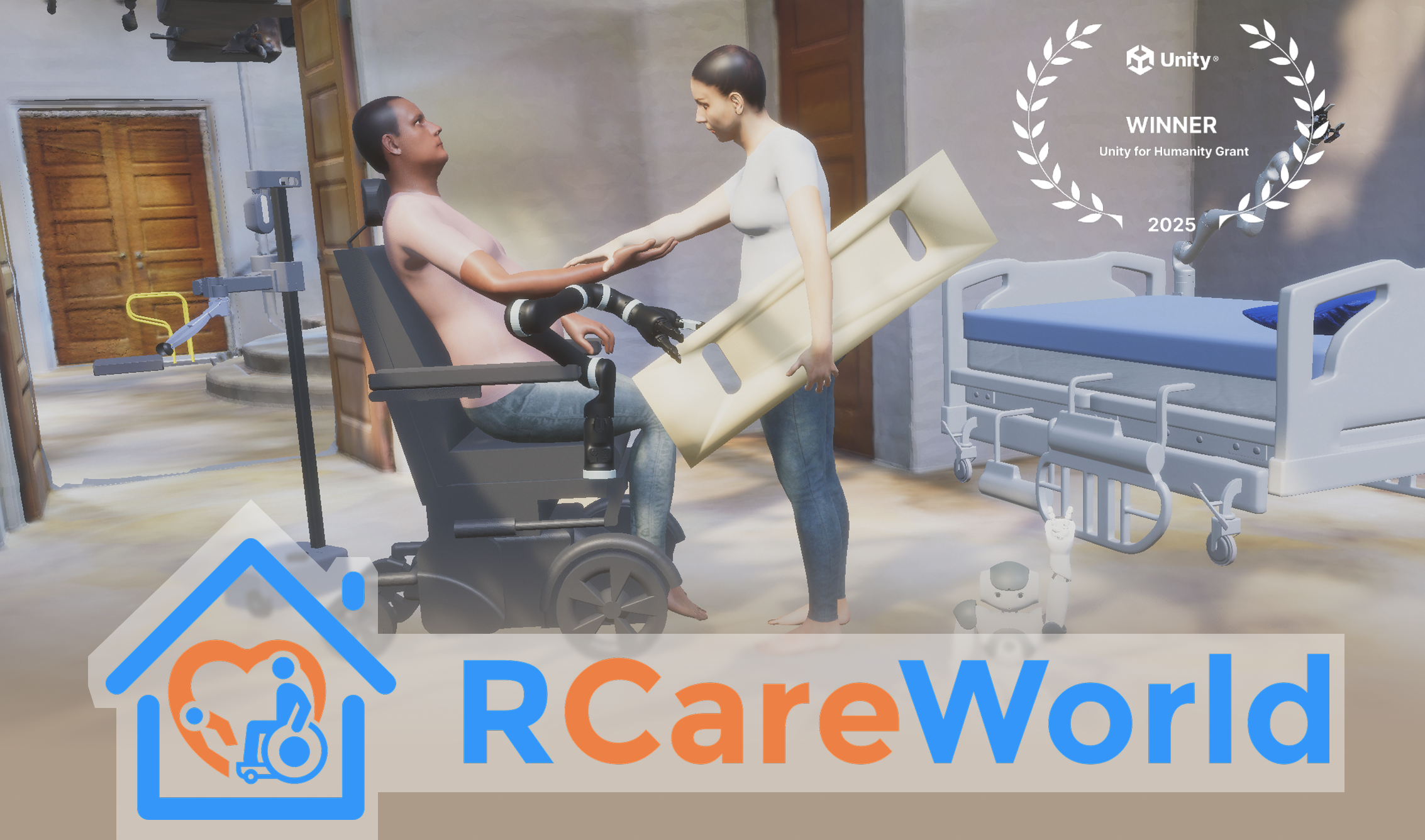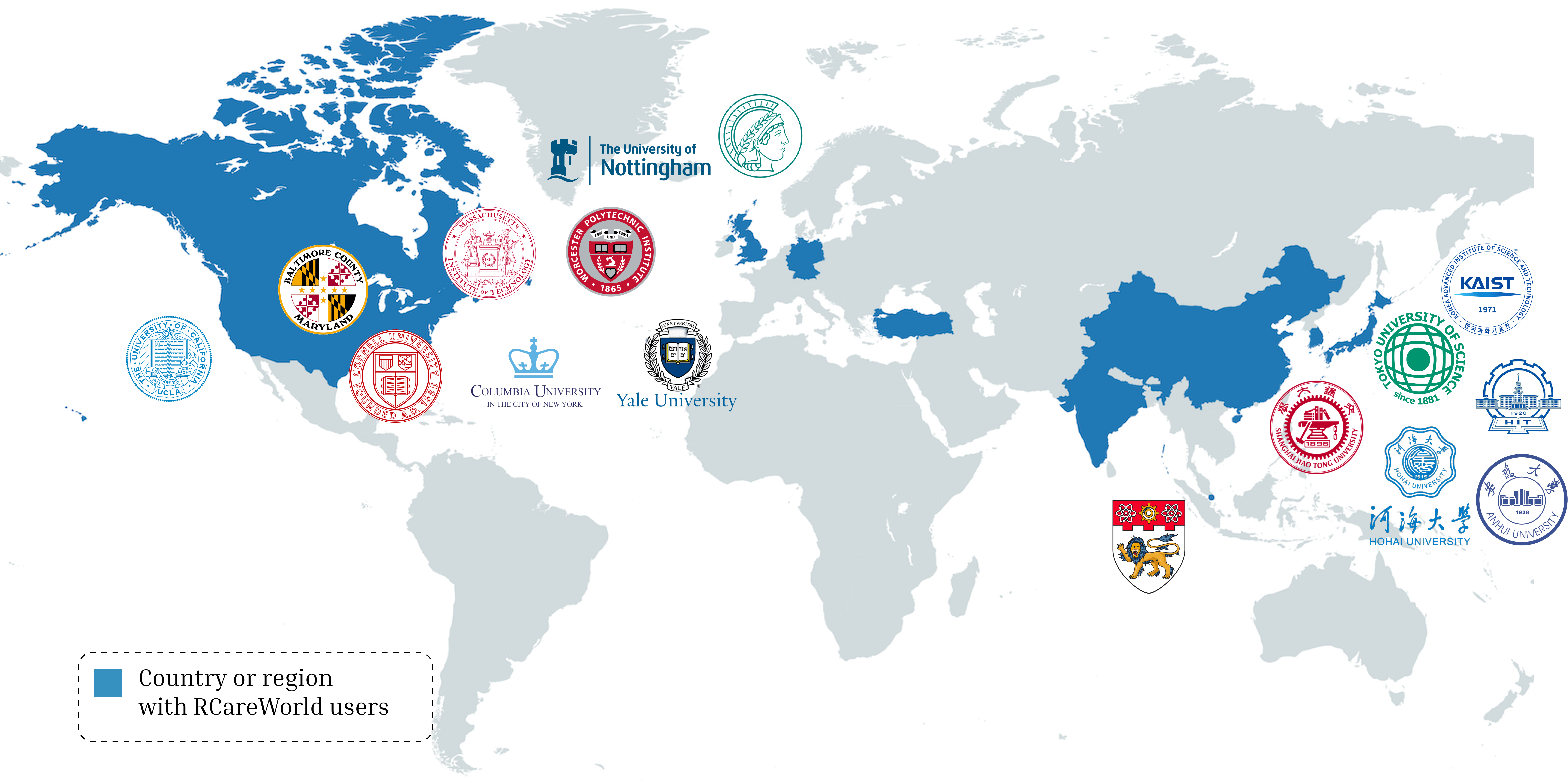RCareWorld: A Human-centric Simulation World for
Caregiving Robots
Winner of RoboCup Best Paper Award, finalist of ABB Best Paper/Best Student Paper Award at IROS 2022.
Winner of Unity for Humanity Grant 2025.

What is RCareWorld?
RCareWorld is a human-centric simulation world for physical and social robot caregiving with support for realistic human modeling, home environments with multiple levels of accessibility, and robots for assistance. This simulation is designed using inputs from stakeholders such as expert occupational therapists, care recipients, and caregivers. It models the human avatars with musculoskeletal models and XPBD-based flesh, and builds them with clinical data. It provides a variety of benchmark ADL tasks in realistic settings. It interfaces with various physics engines to model rigid, articulated, and deformable objects. It provides the capability to plan, control, and learn human and robot control policies by interfacing with state-of-the-art external planning and learning libraries.
Worldwide User Community

Cite Us
@article{RCareWorld,
author = {Ruolin Ye and Wenqiang Xu and Haoyuan Fu and Rajat Kumar Jenamani and Vy Nguyen and Cewu Lu and Katherine Dimitropoulou and Tapomayukh Bhattacharjee},
title = {RCareWorld: A Human-centric Simulation World for Caregiving Robots},
journal = {IROS},
year = {2022},
}